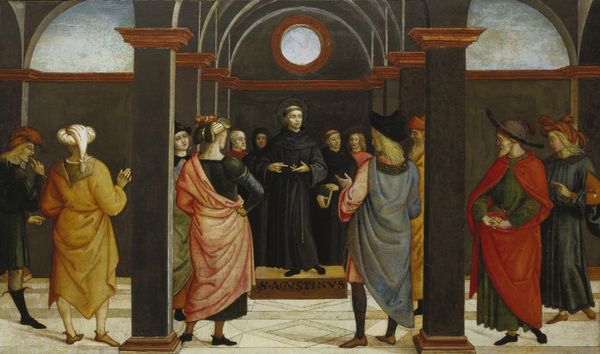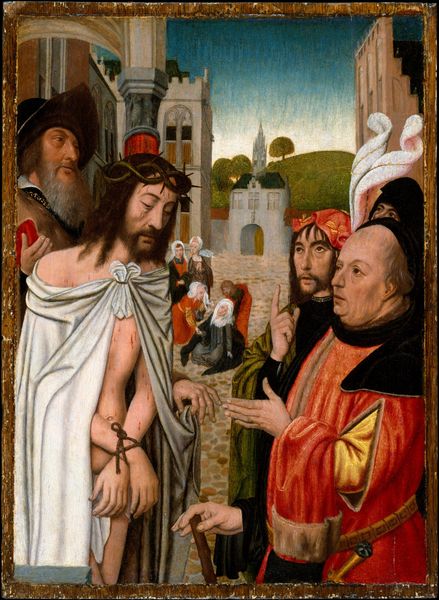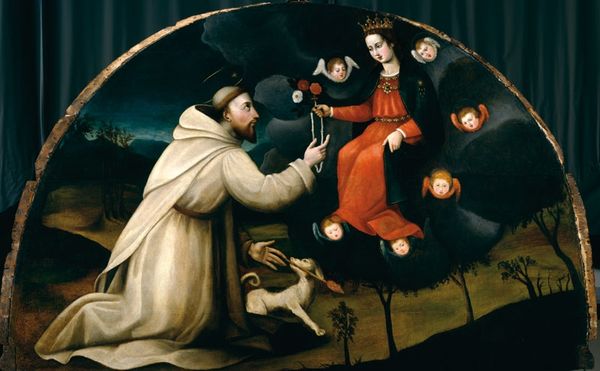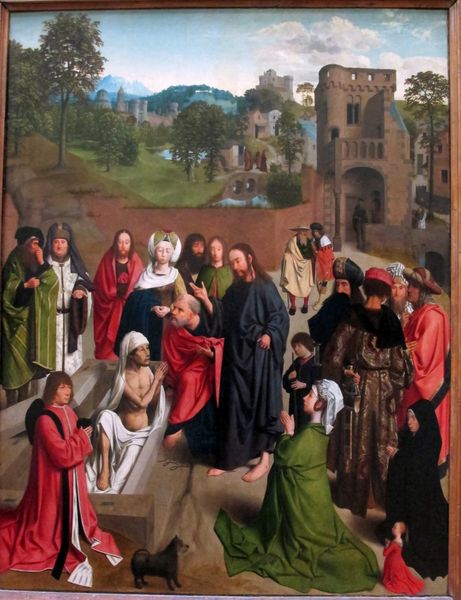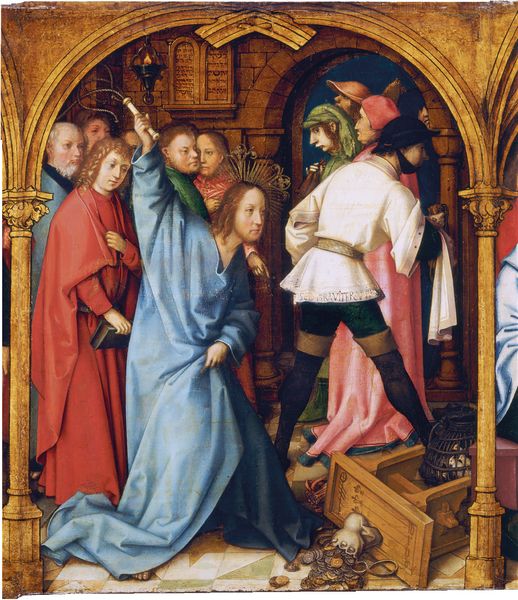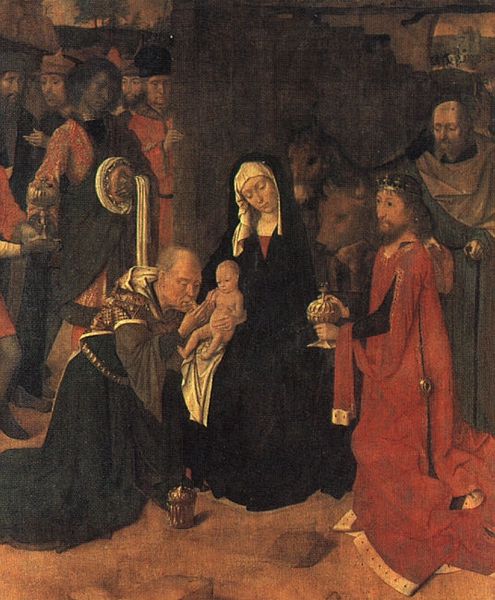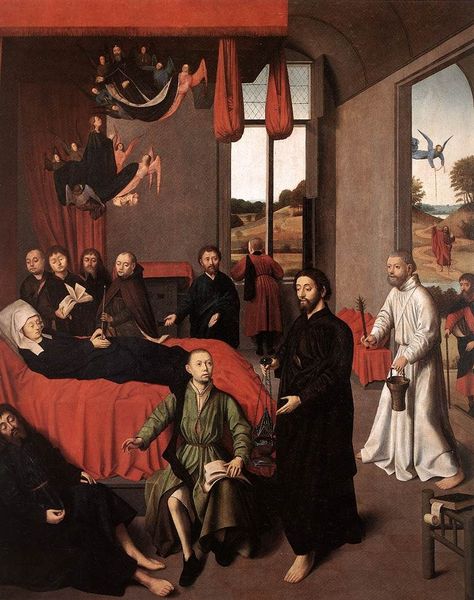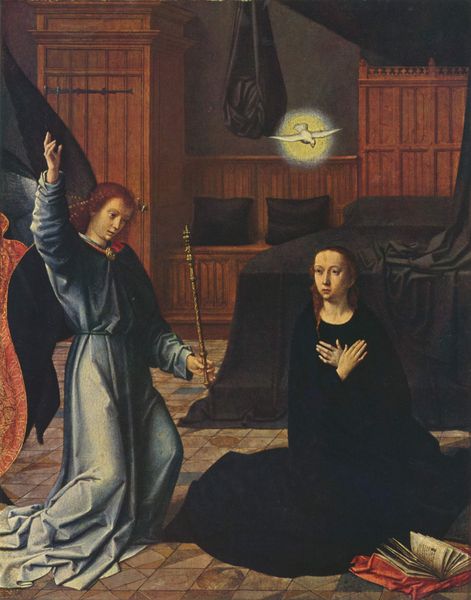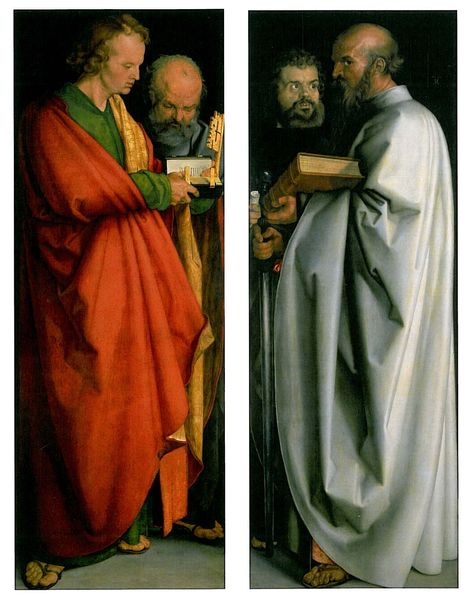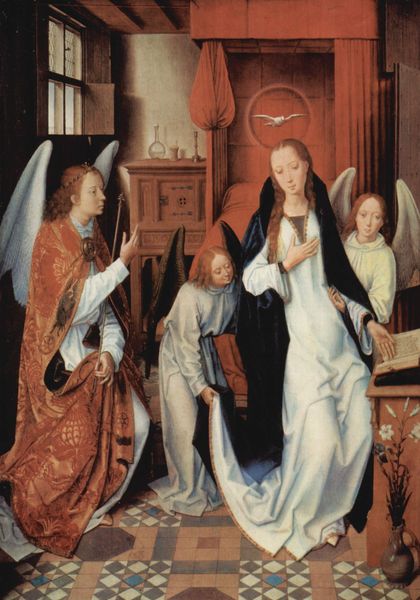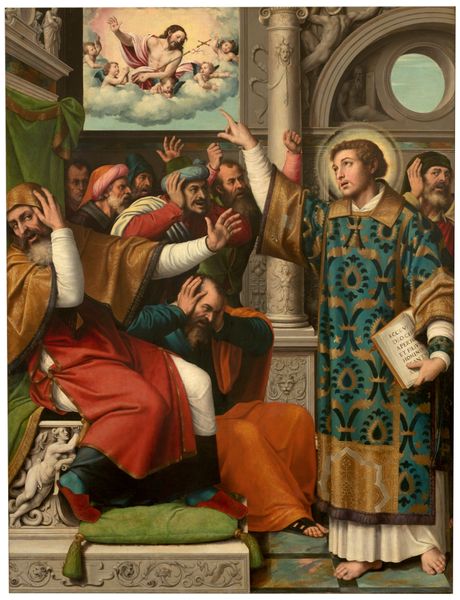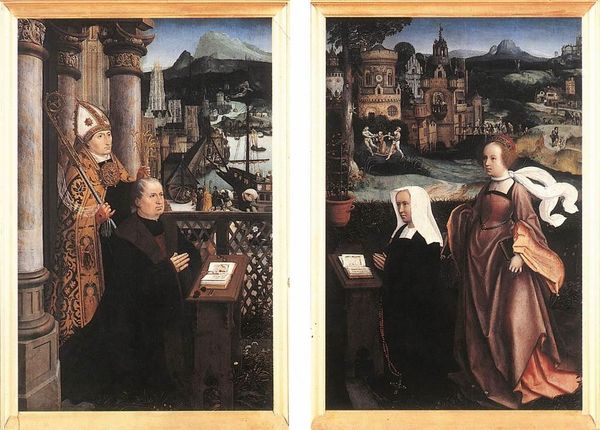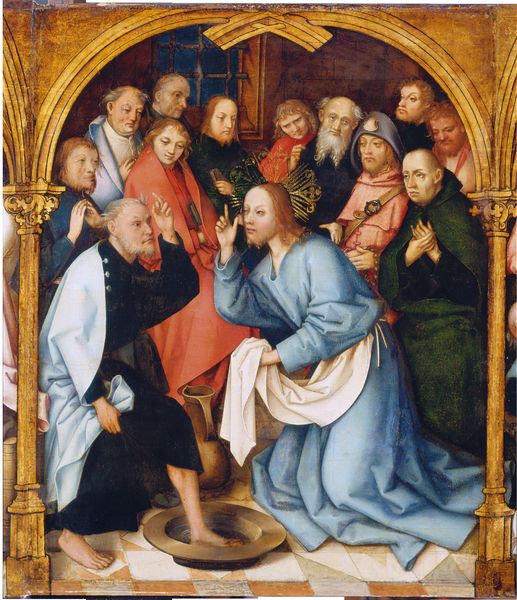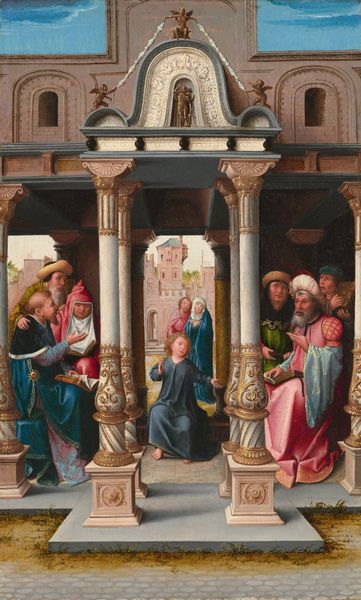
Altar Panel with a Portrait of a Donor in Scarlet under the Protection of St Anthony 1448 - 1451
0:00
0:00
oil-paint, wood
#
portrait
#
allegory
#
oil-paint
#
oil painting
#
wood
#
history-painting
#
northern-renaissance
#
early-renaissance
Dimensions: 57.4 cm (height) x 31 cm (width) (Netto)
Petrus Christus painted this Altar Panel with a Portrait of a Donor in Scarlet under the Protection of St Anthony. The composition presents a stark contrast between the figures and the landscape. The donor, kneeling in a vibrant scarlet robe, immediately draws the eye, positioned against the somber black of Saint Anthony's habit. This use of color not only highlights the donor's importance but also creates a visual hierarchy within the panel. Christus’s formal arrangement, in which the donor kneels supported by the saint, underscores the relationship between earthly supplication and divine intercession. The landscape, meticulously rendered, serves as a backdrop, grounding the figures in a tangible yet idealized world. The artist’s rendering invites us to consider the interplay between representation and symbolism in fifteenth-century art. We might reflect on how Christus, through his meticulous formal choices, invites the viewer to contemplate themes of piety, patronage, and the negotiation of earthly and spiritual power.
Comments
statensmuseumforkunst almost 2 years ago
⋮
Present-day spectators are likely to find themselves immediately captivated by the tactility of the kneeling donor’s scarlet cloak, the colour being accentuated by the complementarity of the mossy grass and tiny plants painted with a very fine brush. Presence and immediacy We are immediately drawn into the painting’s world through the folds of the cloak which reach all the way down to the edge of the image. The presence and immediacy created by such compositional devices is precisely what Petrus Christus was famed for in his day. Reinvention and invigoration He was among the standard-bearers in the reinvention and invigoration of the mute language of painting that took place in the southern Netherlands during the late 15th century. The new compositional ground won went hand in hand with an entire complex of adjustments to both content and form, the objective of which was to reflect and promote the appreciation of subjective religious experience prevalent at the time. An element of a triptych The painting before us today is, in effect, only a torso. It was originally the left panel of a triptych, and the reverse still bears traces of a grisaille (a painting executed in hues of grey) depicting the Annunciation of the Virgin Mary; a picture that would have been visible when the triptych was closed.
Join the conversation
Join millions of artists and users on Artera today and experience the ultimate creative platform.
statensmuseumforkunst almost 2 years ago
⋮
Only a fragment of the painting on the back remains in the upper left corner. With a little imagination this could be the top of a wing painted in shades of grey (a grisaille), probably the wing of the Archangel Gabriel in a painting of the Annunciation. The painting was the left panel of a triptych. When the side panels were closed, the back of the paintings became visible as the front of the altar. Whether the triptych was open or closed depended on religious festivals. It could, for example, have been closed during Lent, i.e. from Shrovetide to Easter Sunday. During his lifetime Petrus Christus was known a pioneer in the painting revival that took place in the Netherlands in the late 1400s, a revival aimed at reflecting and promoting the contemporary focus on personal religious experience.
